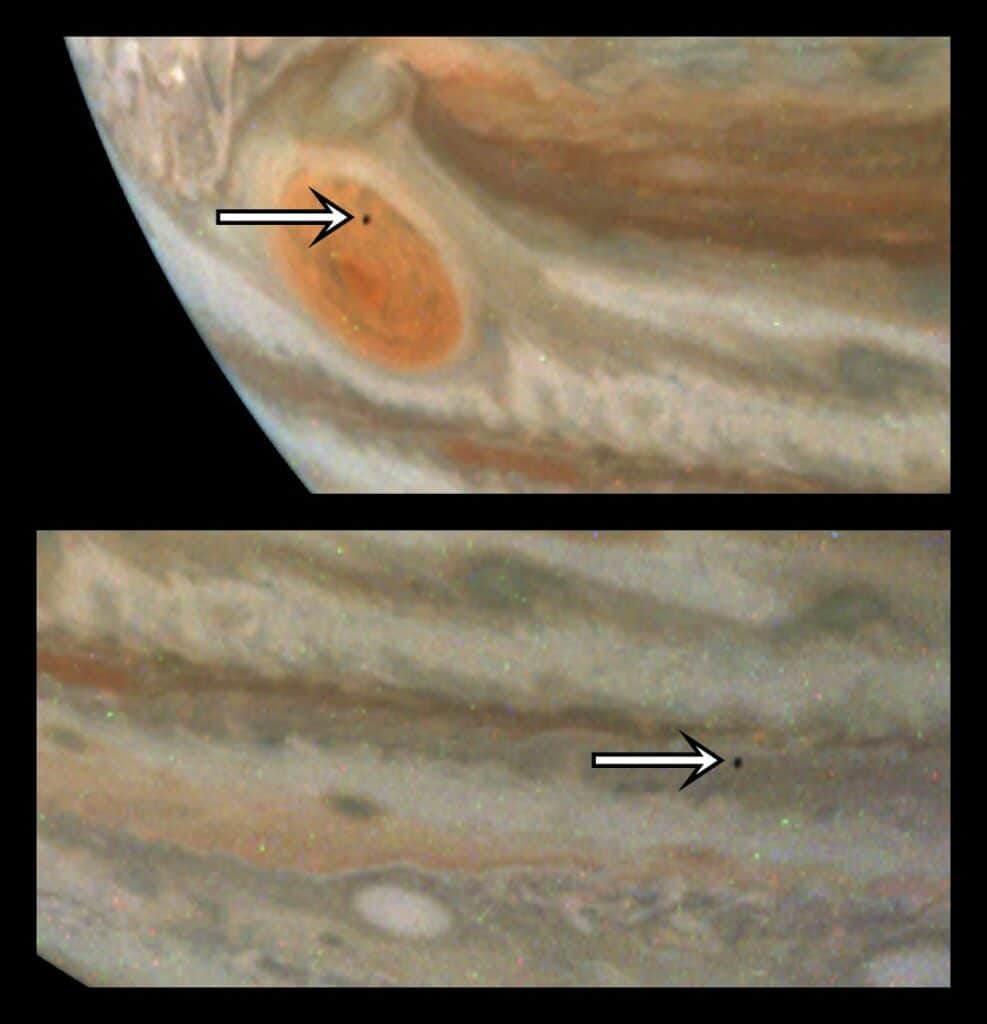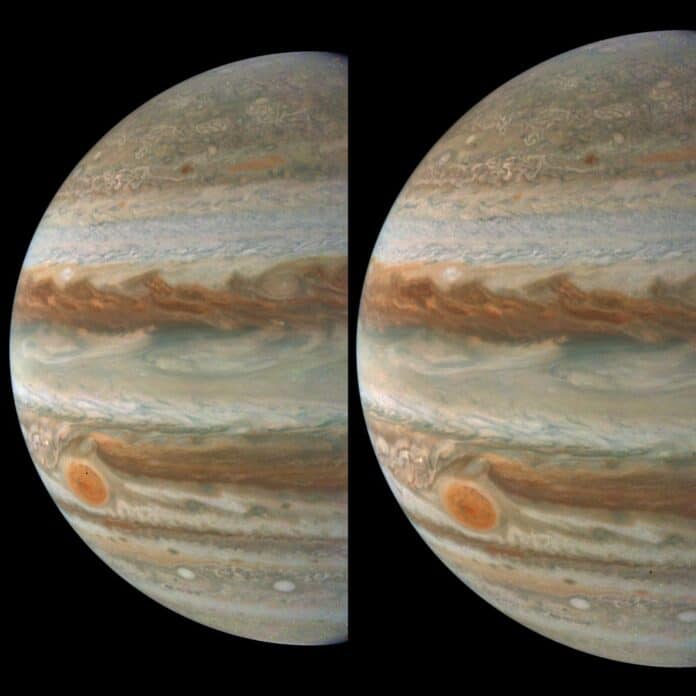On March 7, 2024, NASA’s Juno spacecraft made its 59th close flyby of the massive planet Jupiter, capturing these images of the planet. They offer a clear view of Jupiter’s whirling storms, which include the Great Red Spot and colorful belts. A closer look provides further information: two glimpses of the tiny moon Amalthea.
Amalthea is shaped like a potato and lacks the mass to form a spherical, with a radius of only 52 miles (84 kilometers). Impact craters, hills, and valleys were among the surface features that NASA‘s Galileo satellite discovered in 2000. Over 0.498 Earth days, Amalthea completes one round of Jupiter within the orbit of Io, the innermost of the planet’s four biggest moons.

Amalthea is the solar system’s reddest object, and measurements show that it emits more heat than it takes from the Sun. This could result from the moon’s core experiencing induced electric currents due to its orbit under Jupiter’s intense magnetic field. Alternatively, Jupiter’s gravity-induced tidal pressures may be the heat source.
When the first of these two images was acquired, the Juno spacecraft was around 165,000 miles (265,000 kilometers) above Jupiter’s cloud tops and at a latitude of roughly 5 degrees north of the equator.
